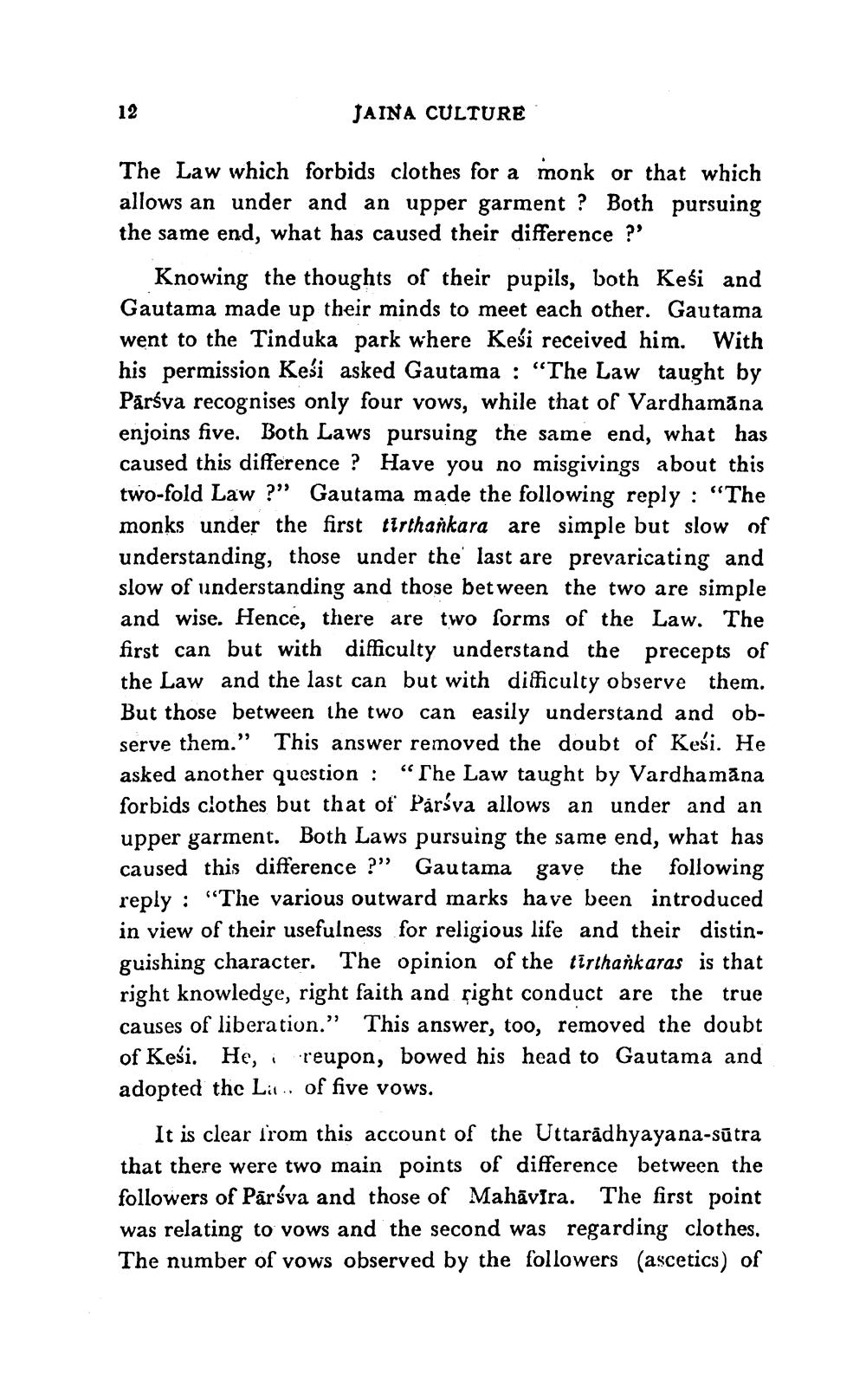________________
12
JAINA CULTURE
The Law which forbids clothes for a monk or that which allows an under and an upper garment? Both pursuing the same end, what has caused their difference ?'
Knowing the thoughts of their pupils, both Kesi and Gautama made up their minds to meet each other. Gautama went to the Tinduka park where Keśi received him. With his permission Keśi asked Gautama: "The Law taught by Parsva recognises only four vows, while that of Vardhamana enjoins five. Both Laws pursuing the same end, what has caused this difference? Have you no misgivings about this two-fold Law?" Gautama made the following reply: "The monks under the first tirthankara are simple but slow of understanding, those under the last are prevaricating and slow of understanding and those between the two are simple and wise. Hence, there are two forms of the Law. The first can but with difficulty understand the precepts of the Law and the last can but with difficulty observe them. But those between the two can easily understand and observe them." This answer removed the doubt of Keśi. He asked another question: "The Law taught by Vardhamana forbids clothes but that of Parsva allows an under and an upper garment. Both Laws pursuing the same end, what has caused this difference ?" Gautama gave the following reply: "The various outward marks have been introduced in view of their usefulness for religious life and their distinguishing character. The opinion of the tirthankaras is that right knowledge, right faith and right conduct are the true causes of liberation." This answer, too, removed the doubt of Keśi. He, reupon, bowed his head to Gautama and adopted the Lat. of five vows.
'
It is clear from this account of the Uttaradhyayana-sūtra that there were two main points of difference between the followers of Parsva and those of Mahāvīra. The first point was relating to vows and the second was regarding clothes. The number of vows observed by the followers (ascetics) of




